Upheaval and change
One of the most successful TV shows of the past several years has been Succession, a darkly funny drama about an exceptionally dysfunctional family of rich “one percenters” and their competition to succeed the ailing father as CEO of a huge corporation.
In ecology, the word succession means something entirely different—it refers to the changes that ecological communities go through over time after a major upheaval, such as a forest fire or a flood.
Unlike in the television show, ecological succession is not as straightforward as winner-take-all; it’s more of a constant evolution of many moving parts.
Generally, succession follows somewhat predictable pathways. In forest soils, there is an organic layer on the surface that harbours a “bank” of seeds, ready to germinate under appropriate conditions. After a low-intensity fire, the opening of the forest canopy will trigger these seeds to sprout, and what’s known as secondary succession will begin. In extremely hot fires, the soil and its accompanying seed bank can be burnt off, leaving only mineral soil or rock behind. This is called primary succession.
A clean slate
One of the most famous examples of primary succession began in 1883 on the island of Krakatau, in South East Asia. Three volcanoes erupted in what was one of the most powerful explosions ever recorded on Earth—far more powerful than even the largest thermonuclear bomb. Krakatau was scoured clean and was considerably enlarged by the ensuing lava flows. Every year between 1883 and 1935, scientists visited the island to study succession. By 1884 there were a few grasses, and a single spider. By 1887, the grasses had grown into dense fields with the occasional tree. By 1889, many insects had found their way to the island, as well as a single monitor lizard. After 50 years there were extensive forests, and many birds and reptiles.
Post-fire succession in Jasper will be a complex mix of primary and secondary succession – some areas will have been scorched down to rock and mineral soil, while other areas will contain live trees, organic soil and that all-important seed bank. Also, Jasper is not an isolated island like Krakatau, so seeds and animals from nearby, unburnt areas will be able to quickly colonize the new habitat as it matures. Even the primary succession areas will in time build up an organic layer of debris, blown in from the edges, that will enable seedlings to take hold.
Home Makeover, post-burn edition
Just as some residents of Jasper must remove the remains of their cherished homes before rebuilding, nature is already starting to recycle the old forest to make way for the new. As the first seedlings emerge from the ashes, another kind of colonization will be taking place: insects will be moving in to feast on all those newly-killed trees.
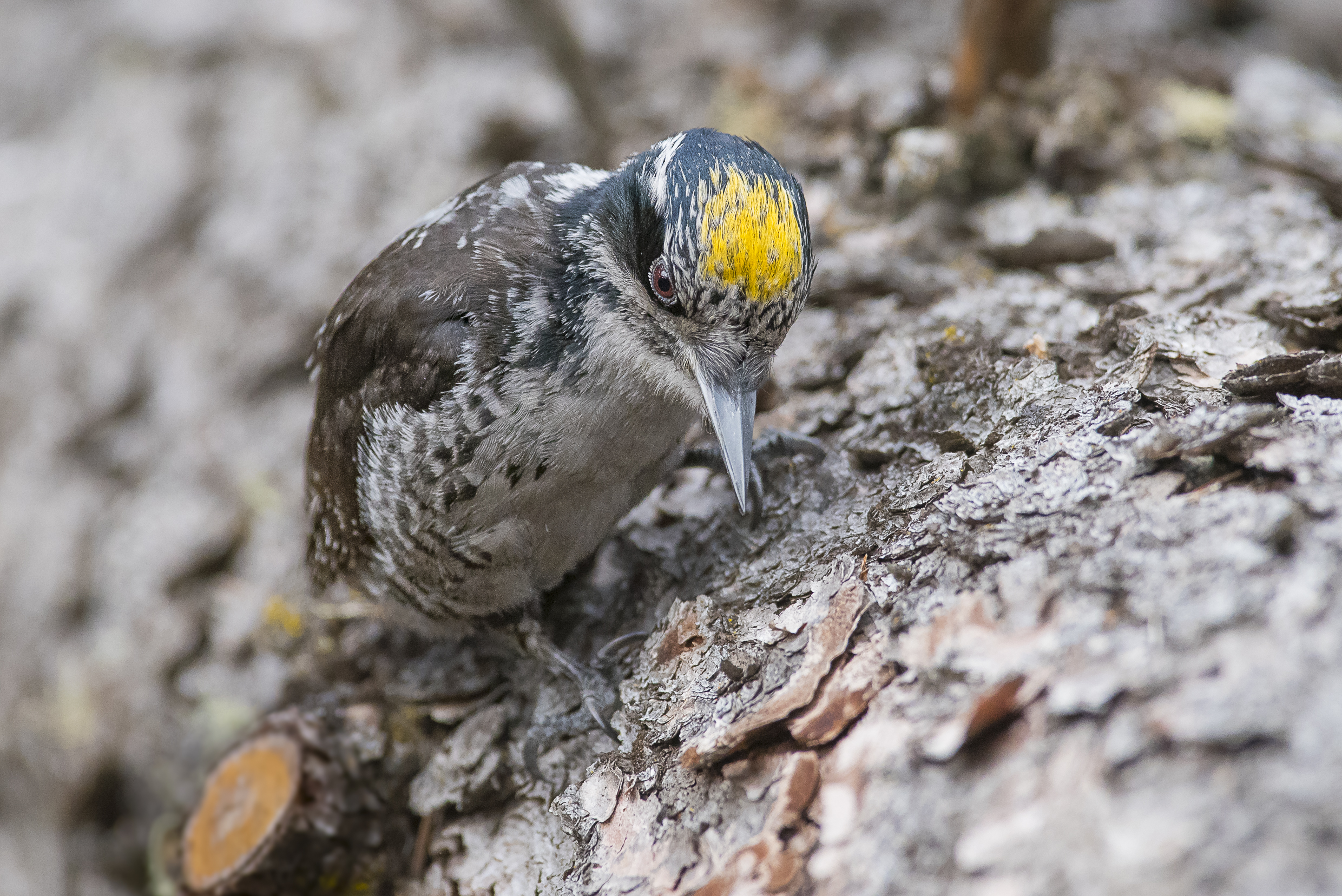
Wood boring beetles like the white-spotted longhorn beetle will arrive almost immediately and lay their eggs—sometimes on logs that are still smoking!
These eggs will hatch into larvae that feed on the inner bark of the dead and dying trees, and are an important part of decomposition and nutrient cycling in the post-burn habitat. Besides helping to break down the dead wood, the larvae also provide food for birds that live in newly burnt forests, namely woodpeckers.
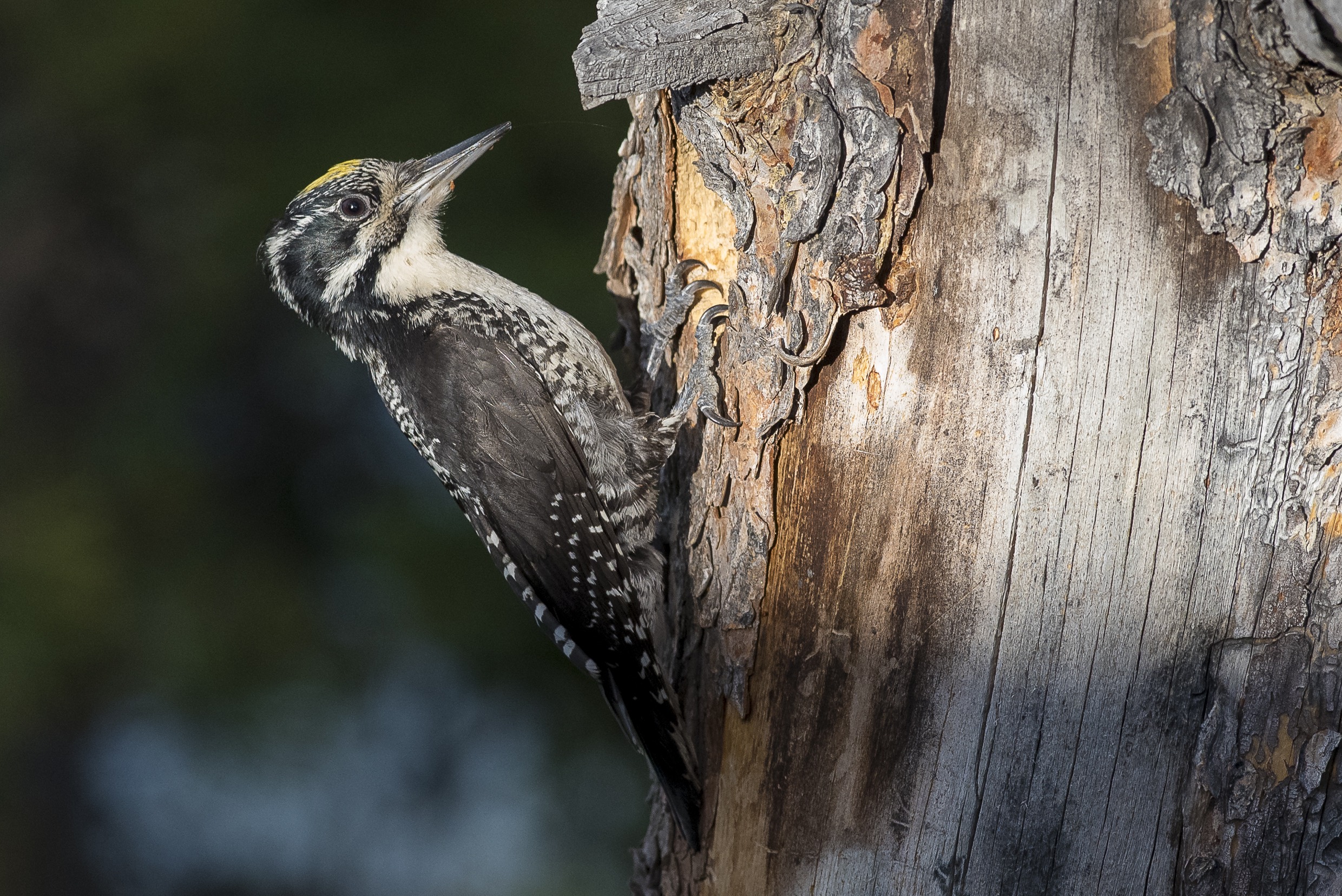
A varied peck of woodpeckers
You might think that woodpeckers are all cut from the same cloth, i.e., they drill holes in trees to get at the bugs. In fact, Jasper’s nine woodpecker species show a fair bit of diversity in their food-gathering techniques.
Northern Flickers do most of their foraging on the ground, eating ants and beetles, but also consuming berries in the winter. Yellow-bellied and Red-naped Sapsuckers drill neat rows of small holes in the bark of birch trees, to make the sap run; they will then eat the sap and also the insects that land on it. And the rarely seen Lewis’s Woodpecker catches insects in flight, like some kind of wacky swallow! The Downy, Hairy and Pileated woodpeckers are “typical” woodpeckers—they drill holes in trees (dead or alive) to get at the bugs within.
Burning desire
But it’s the Three-toed and Black-backed Woodpeckers that specialize in recently-burnt forests. These two species are closely related and have roughly similar life histories.
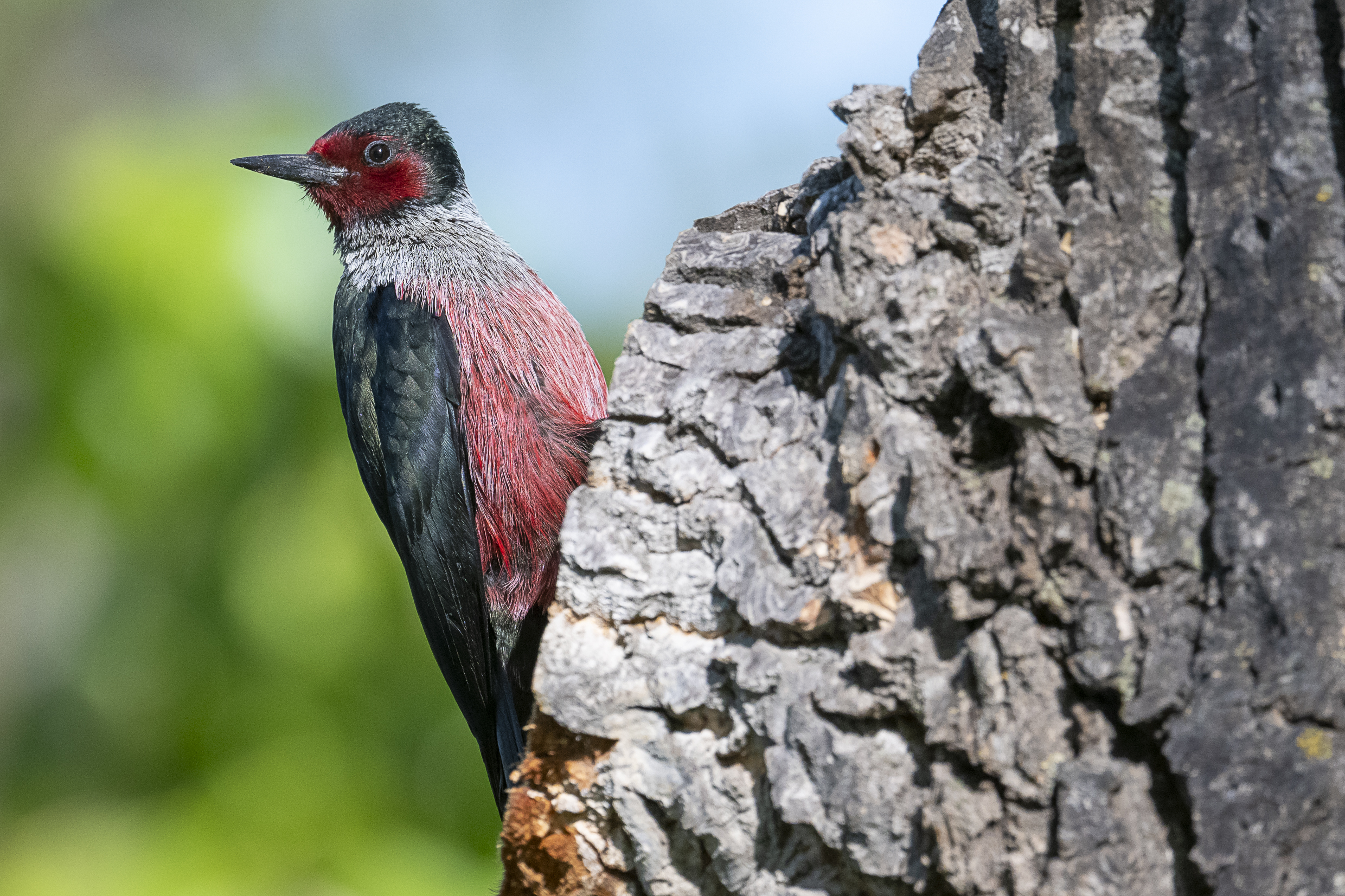
They are both small to medium-sized woodpeckers with a predominantly black and white colour scheme. The males of both species also have yellow foreheads. Despite their names, both of these woodpeckers have three toes on each foot, not just the Three-toed (most other woodpeckers have four). At least the Black-backed is the only one with a totally black back!
Beetle-mania
Jasper will be home to both of these species for a number of years, as they both like to forage in burnt forests. In fact, the Black-backed is highly dependent on freshly burned forests. The Three-toed is a bit more of a generalist and can also be found in mature forests, especially those with some other kind of disturbance, like floods or wind throw. The Black-backed can be expected to hang around for about eight years after a fire, after which wood-boring insects start to decline. Three-toes will get out of Dodge a few years sooner.
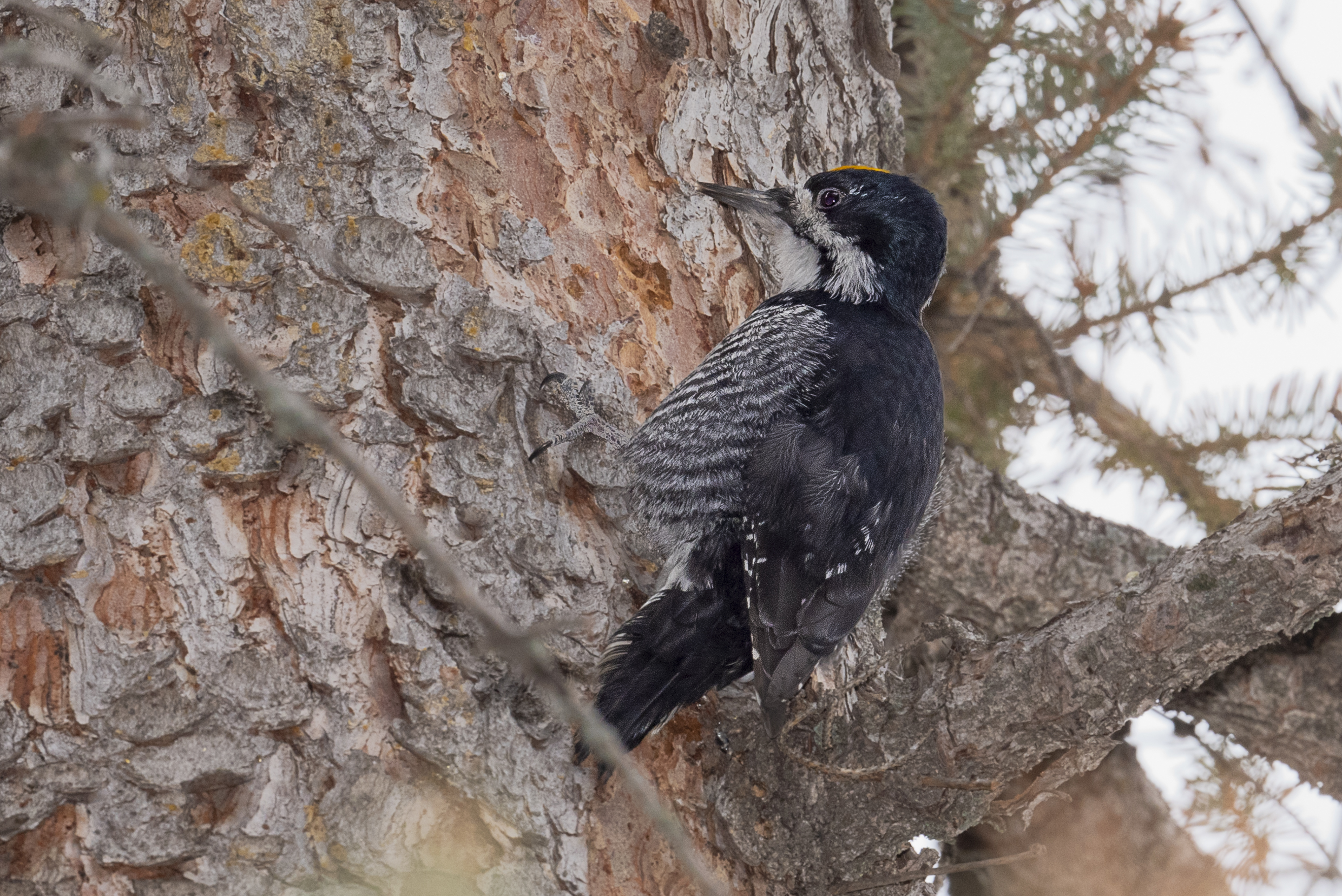
Three-toes will also take advantage of mountain pine beetle outbreaks: Jasper actually had a short-term bump in Three-toed Woodpecker numbers during the height of Jasper’s beetle-mania. For example, Maligne Canyon and Wabasso campground harboured nesting pairs for a few years while the beetles were chewing through our Lodgepole Pines.
I’m glad I axed
This is the point in the story where I had intended to describe how woodpecker skulls act as shock absorbers. But a funny thing happened on my way to this paragraph; I read some studies claiming that woodpecker skulls are not actually shock absorbers! The idea that woodpecker skulls act like bike helmets to prevent concussions has been around for a long time—in both the popular and scientific literature—so this revelation was something of a surprise to me.
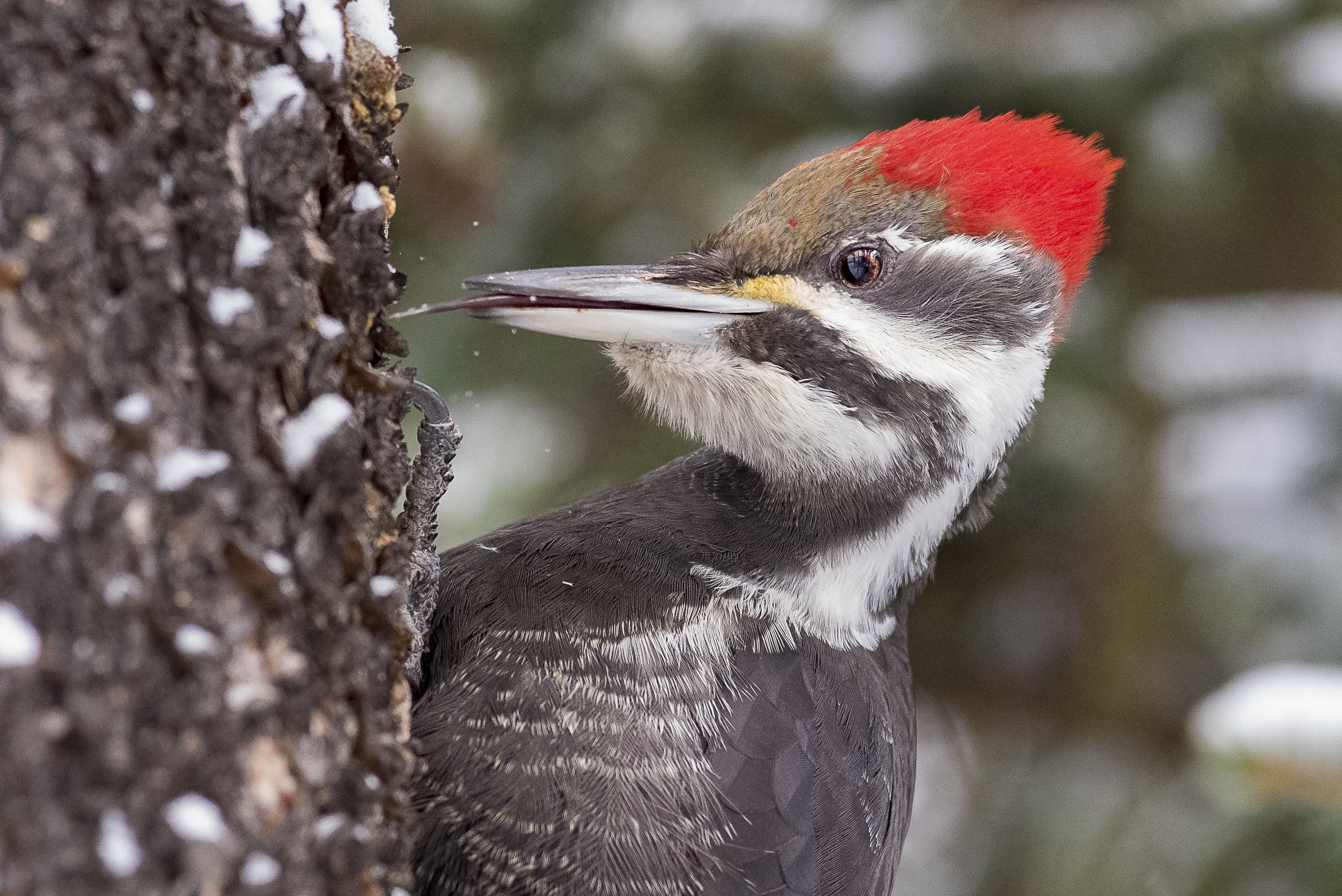
Safety helmets of all sorts have been inspired by this belief in woodpecker anatomy. However, in 2022, a group of Dutch scientists used high speed videography and computer modelling to show that a woodpecker’s beak, head and neck act as a single unit. In other words, a woodpecker’s skull doesn’t act like a bike helmet; instead their entire head and neck act like a stiff hammer with an ice pick on the front—or to put it in terms that Jasperites might prefer, like an ice axe!
What’s up, Doc?
So, how is it then that woodpeckers are not wandering around like punch-drunk boxers, concussed to the nines? First, woodpeckers are a lot smaller than we are. Any small mass can withstand greater impacts than a large mass—think of a house fly hitting a kitchen window time after time. If you banged your head against a wall at the same speed, you’d soon be seeing stars like Bugs Bunny.
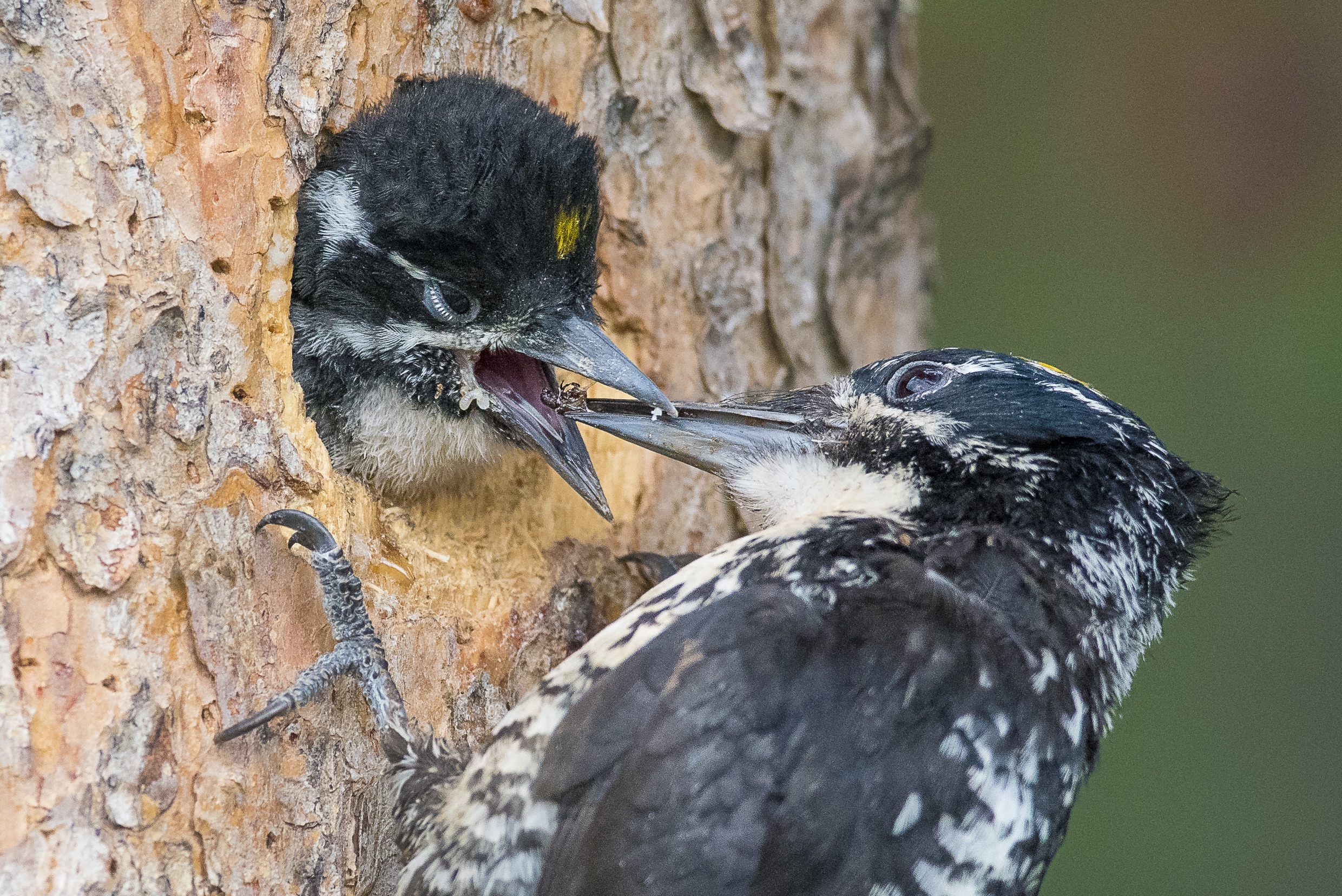
Secondly, although woodpecker skulls aren’t shock absorbers, it seems that there are some anatomical adaptations worth mentioning. There is a bony overhang at the front of the skull which diverts impact stress to the neck and body, rather than to the braincase. Also, the bones at the front of the skull have a higher resonance frequency than the rest of the skull, further reducing stress. Taking these factors together, the scientists were able to show that the impact stress on a woodpecker’s brain was far below what would cause a concussion in a person. Perhaps this new knowledge will inspire engineers to design even better bike helmets!
Take a hike
So as Jasper residents get their lives back together, rebuilding or restoring their homes, remember that the forests and their residents are going through the same process of clearing out and re-growing. Hopefully those folks in Jasper can find the time to take a break from their hard work and get out for a hike in the recovering forests…just remember to keep an eye out for our beautiful woodpeckers!
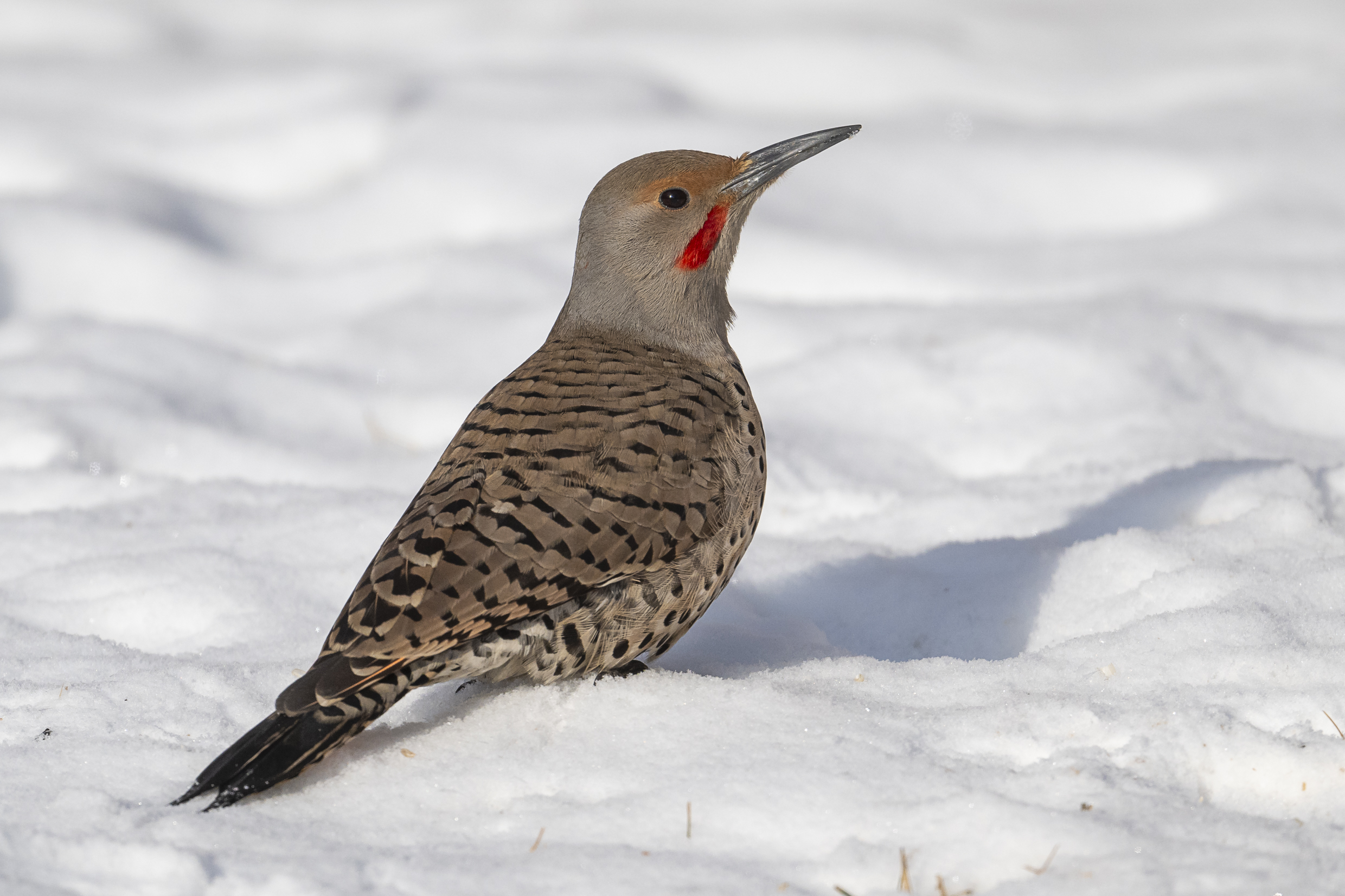
Mark Bradley // info@thejasperlocal.com


